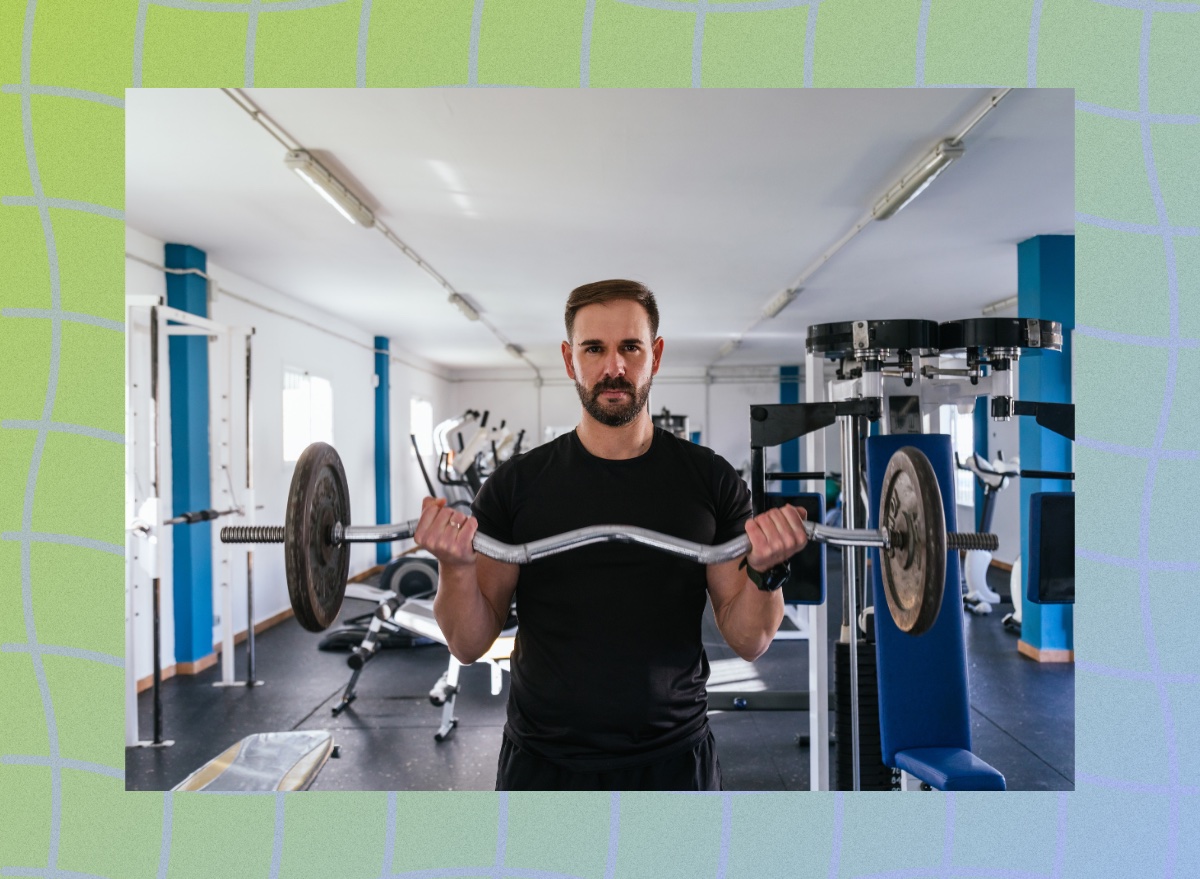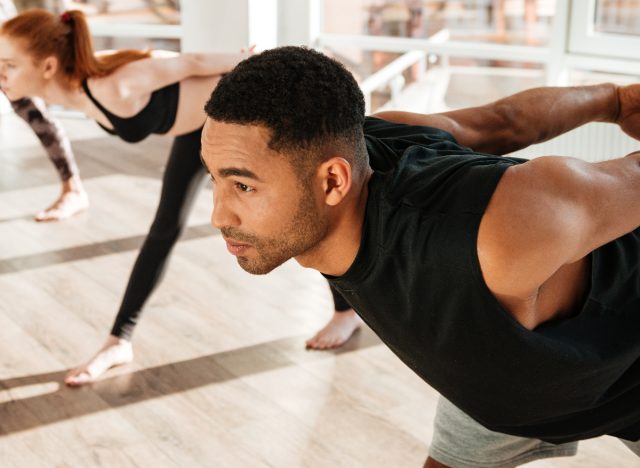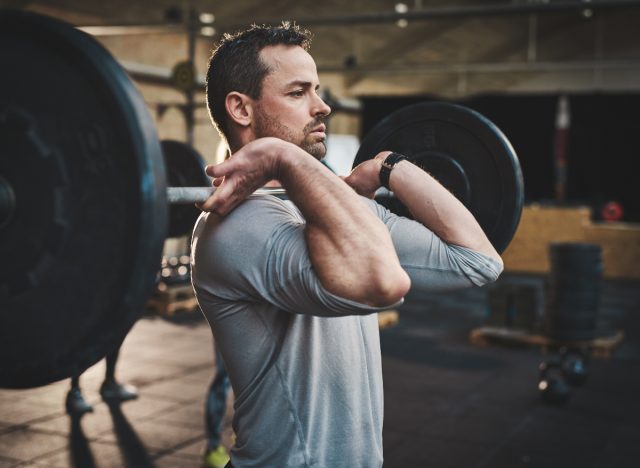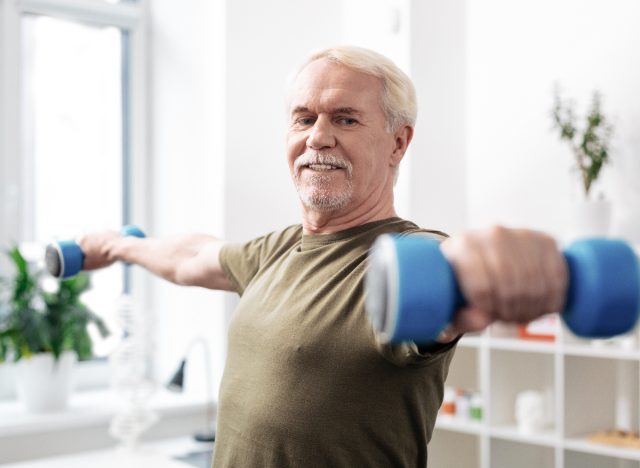5 Worst Exercises for Men To Regain Muscle

If you grew up in the ’80s and ’90s, you likely got your fill of action movies packed with combat scenes and next-level jacked actors like Arnold Schwarzenegger and Sylvester Stallone. Generations of kids grew up idolizing these muscle-bound movie stars who inspired multitudes of young men to start hitting the gym and lifting heavy weights. You may be among those who hit the gym hard when they were younger and gained muscle mass. However, if you lost it with age, we’re here to optimize your fitness routine and share five of the worst exercises for men to regain muscle. Needless to say, don’t waste your time on them!
Maintaining muscle strength has benefits far beyond looking good with your shirt off. For example, strength training can increase your ability to perform everyday activities, protect your joints from injury, and improve your balance. But even if you do strength training regularly, losing muscle as you age is natural. After age 30, you start losing approximately 3% to 8% every 10 years. Less muscle can be detrimental to your long-term health—especially as you age—since you become weaker and less mobile, increasing your risk of suffering from falls and fractures.
Fortunately, we have some good news. You can rebuild lost muscle by avoiding certain exercises that inhibit muscle growth (while strength training with the correct exercises, of course). We spoke with TJ Mentus, CPT, a certified personal trainer at Garage Gym Reviews, who shares five common exercises that can kill your muscle gains.
Let’s explore the five worst exercises for men to regain muscle.
Cardio

While there’s no denying that cardio is essential for overall health and adding years to your life, going overboard with your cardio sessions can kill your efforts to regain muscle. Excessive cardio can place your body in what’s called a catabolic state where it breaks down fat and muscle for energy.
“Cardio provides many health benefits and should be a part of everyone’s fitness routine,” Mentus states. “However, when trying to build muscle, cardio can be counterproductive. The body needs an excess of calories to build muscle. Cardio burns calories at a higher rate without providing the muscle-building benefits of resistance training. So, the calories your body could use to build muscle fuel cardio sessions. When focusing primarily on muscle, cardio should be limited or done as a part of HIIT workouts, which can provide some muscle-building benefits.”
Isolation Exercises

For the uninitiated, isolation exercises activate only one muscle group or joint at a time. Instead, Mentus recommends performing compound movements (e.g., squats, bench presses, and deadlifts) that engage multiple muscle groups simultaneously.
“If you’re trying to build muscle all over, isolation exercises are an inefficient use of your workout time. Compound movements engage many more muscles per exercise, and that tension then helps build more muscle overall. Try bigger movements like squats, deadlifts, presses, and rows rather than curls and tricep extensions,” says Mentus.
Hot Yoga

While some men may scoff at this spiritual discipline, anyone who’s done a hot yoga session knows it delivers a solid workout that provides several health benefits. However, hot yoga is an efficient calorie burner that can work against muscle growth.
“Like cardio, yoga provides many health benefits but will not directly help build muscle and may get in the way of it,” says Mentus. “Hot yoga especially increases sweat and the metabolic rate, burning calories that are important for those muscles to build themselves up. If you want or need to do yoga for its benefits, stick to a very low-intensity version at a normal room temperature.”
One-Rep Max

“How much do you bench?” We’ve all been asked this before. While your one-rep max (the maximum amount of weight you can lift at one rep of a given movement) indicates overall strength, it doesn’t do any favors in the muscle-building department.
Mentus explains, “Just doing one rep is not enough to stimulate muscle growth. Muscles need time under tension, and in one rep, the muscles do not have to strain for too long. Now, if you want to build to a heavy one rep and then do drop sets for more reps, that would be fine to get the best of both worlds.”
Lifting Light Weights at Higher Reps

Though hypertrophy training (lifting light to moderate weights at higher reps) is an effective way to develop and grow muscle, you eventually reach a point of diminishing returns.
“If you can lift a weight for 20 or more reps, then it’s not going to be effective for muscle building. Ideally, stay within the eight to 15 rep range, meaning those last couple reps in your sets are getting challenging,” says Mentus. “If you could still do many more reps at the end of your sets, the weight is not challenging enough. Muscles need to work against resistance that triggers them to adapt in order to grow, so if there is little resistance, then there’s no reason to grow.”









